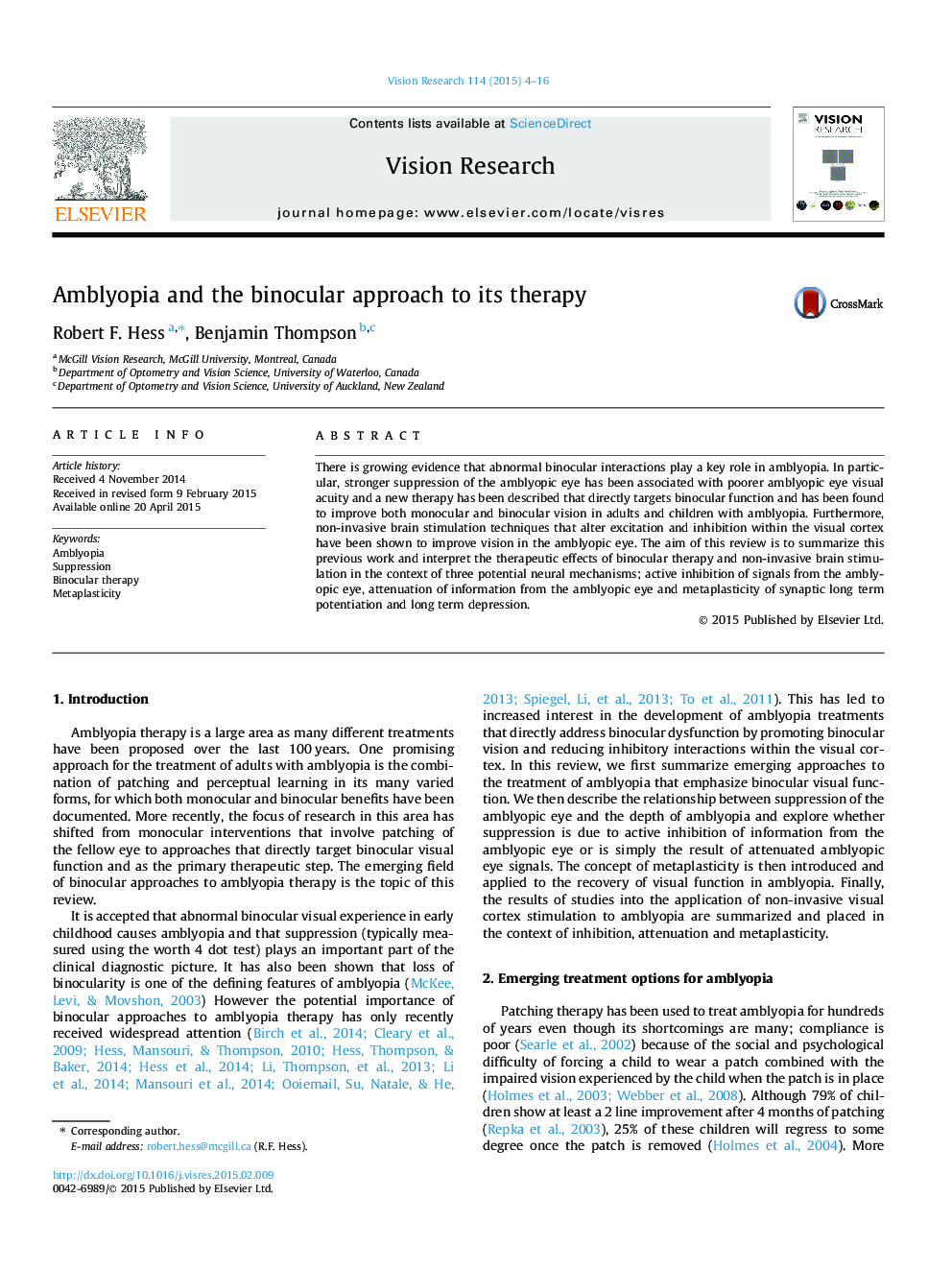| Article ID | Journal | Published Year | Pages | File Type |
|---|---|---|---|---|
| 4033594 | Vision Research | 2015 | 13 Pages |
•Dichoptic therapy improves visual function in adults and children with amblyopia.•Non-invasive brain stimulation improves contrast sensitivity in adults with amblyopia.•Mechanisms may include reduced suppression, increased monocular sensitivity or metaplasticity.
There is growing evidence that abnormal binocular interactions play a key role in amblyopia. In particular, stronger suppression of the amblyopic eye has been associated with poorer amblyopic eye visual acuity and a new therapy has been described that directly targets binocular function and has been found to improve both monocular and binocular vision in adults and children with amblyopia. Furthermore, non-invasive brain stimulation techniques that alter excitation and inhibition within the visual cortex have been shown to improve vision in the amblyopic eye. The aim of this review is to summarize this previous work and interpret the therapeutic effects of binocular therapy and non-invasive brain stimulation in the context of three potential neural mechanisms; active inhibition of signals from the amblyopic eye, attenuation of information from the amblyopic eye and metaplasticity of synaptic long term potentiation and long term depression.
